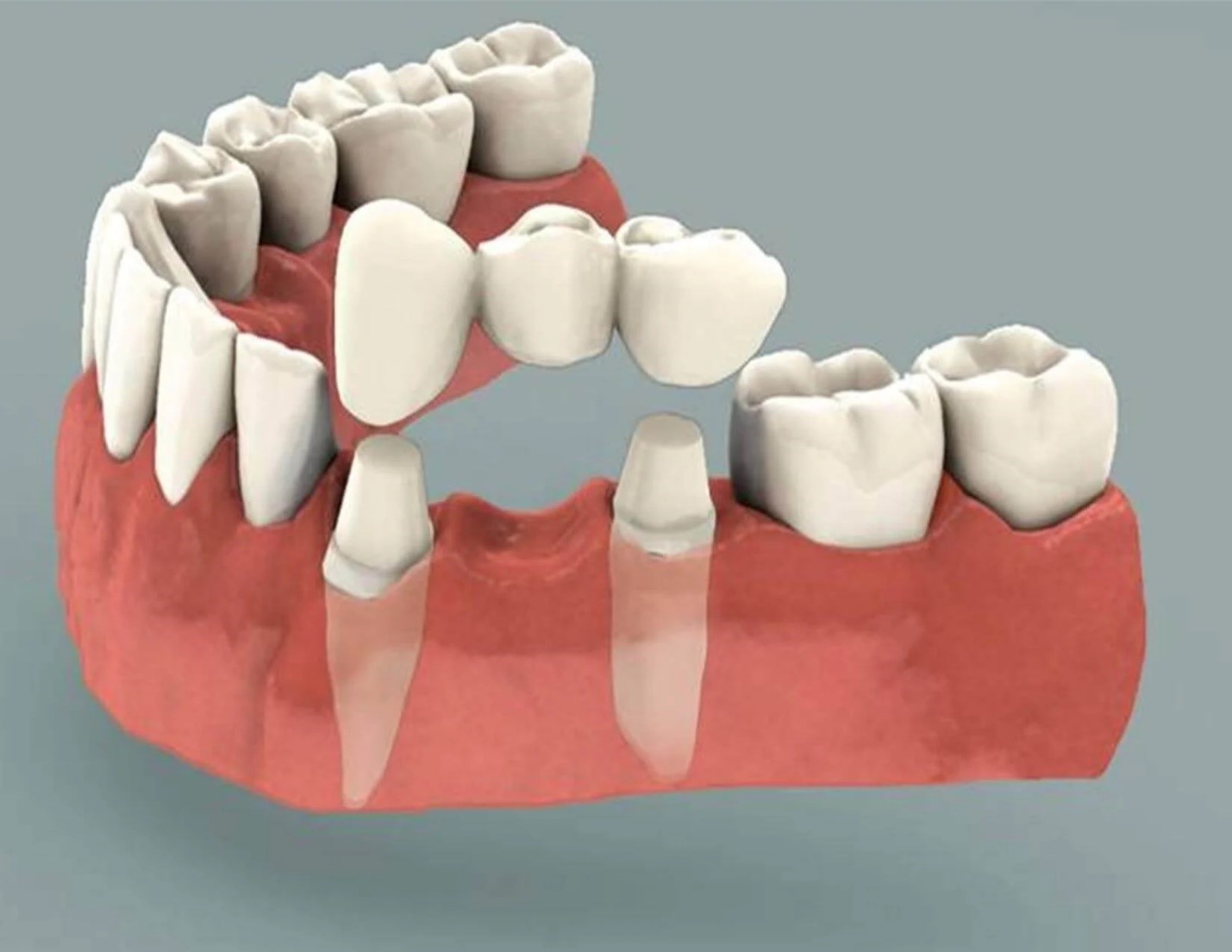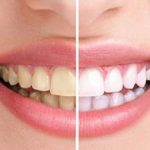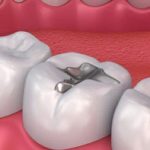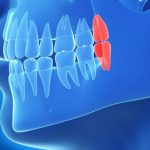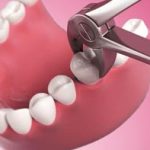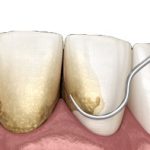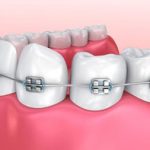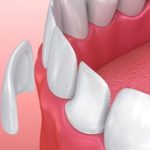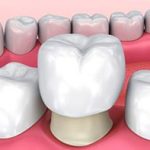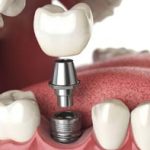DENTAL BRIDGES
What is a dental bridge?
Dental bridges replace missing teeth. Specifically, they can replace one tooth or a row of missing teeth.
As the name implies, this appliance literally “bridges the gap” in your smile. Dentists can create custom bridges that match the shade of your natural teeth.
There are different parts that make up a dental bridge:
- Abutments are the structures that support your dental bridge. While the term often refers to natural teeth, it can also refer to tiny connector posts used in dental implant-supported bridges.
- Pontics are the artificial (false) teeth that fill in the gap left behind by missing teeth.
Depending on your situation and the type of bridge you receive, your bridge might consist of one or more abutments and one or more pontics.
Types of dental bridges
Dentists use different types of bridges based on your oral health goals. The main four types of dental bridges include:
- Traditional dental bridge. This is the most common type of dental bridge. It consists of dental crowns(caps) on both ends with pontics (artificial teeth) in between. A dentist bonds the crowns to your natural teeth (abutments) on either side of the gap, and the artificial teeth (pontics) fill in the space between. Dentists use traditional dental bridges when you have healthy natural teeth on both sides of the gap.
- Cantilever dental bridge. A cantilever bridge is similar to a traditional bridge. But there’s only a crown on one end, not both. So, when your dentist bonds the bridge onto your abutment tooth, the artificial tooth (pontic) “hangs over” or extends across the gap. Dentists use cantilever bridges when you only have natural teeth on one side of the gap. Due to their design, cantilever bridges aren’t as strong as traditional bridges.
- Maryland dental bridge. A Maryland bridge (or resin-bonded bridge) uses metal wings instead of crowns to secure your bridge. A dentist bonds the wings to the backs of your neighboring teeth to hold your bridge in place. Dentists typically use Maryland bridges to replace front teeth. These appliances aren’t strong enough to withstand the chewing forces of back teeth.
- Implant-supported bridge. An implant-supported bridge is similar to a traditional bridge, but it rests atop dental implantsinstead of natural teeth. Dental implants are small threaded posts that replace missing teeth roots. Before attaching a bridge to dental implants, your implants must fully integrate (fuse) with your jawbone. This process takes three to six months on average, but it can take longer depending on your situation. Dentists can use implant-supported bridges when you have three or more missing teeth in a row.
To determine what type of bridge you need, a dentist will consider several factors, including:
- Your age. (Dentists typically don’t place bridges in children.)
- How many teeth you’re missing.
- The size of the gap.
- The condition of your teeth next to the gap.
- Whether you have natural teeth on both sides of the gap.
- The overall health of your teeth and gums.
- Your personal preferences.
What happens during a dental bridge procedure?
It depends on what type of dental bridge you receive:
Traditional or cantilever bridge
To place a traditional or cantilever bridge, your dentist will:
- Give you local anesthesiato keep you comfortable during your dental bridge procedure.
- Reshape your abutment teeth(the natural teeth that’ll support your new bridge). To do this, they’ll need to remove some tooth enamel. This step is irreversible.
- Take dental impressionsand send them to a dental laboratory. There, a lab technician will use them to create your final bridge.
- Place a temporary bridge until a lab creates your final bridge. It usually takes about two to four weeks to make a dental bridge.
During a second office visit (once your final bridge is ready), your dentist will:
- Remove your temporary dental bridge.
- Try on your new final bridge and check the fit.
- Bond (cement) your new dental bridge in place.
Some dentists use CAD/CAM (computer-aided design and computer-aided manufacturing) technology to create custom bridges in their office during the same appointment. Ask your dentist if this is a possibility for you.
Maryland bridge
To place a Maryland bridge, your dentist will:
- Prepare your teeth for the metal wings.
- Take dental impressions and send them to a laboratory. (A lab technician will use these to make your final dental bridge.)
Once your final bridge is ready, your dentist will schedule a second office visit. During this appointment, they’ll:
- Try in your new Maryland bridge and check the fit.
- Apply dental etch to the back surfaces of your neighboring (abutment) teeth. This allows for bonding of the dental cement.
- Bond the wings of the Maryland bridge to the backs of your abutment teeth using dental resin cement.
Implant-supported bridge
An implant-supported bridge requires several office visits, including one surgery appointment.
During the first appointment, a dentist, periodontist or oral surgeon will:
- Give you anesthesia to numb your mouth and keep you comfortable.
- Place dental implants into your jaw during an oral surgery procedure.
After surgery, your implants will need to heal and fuse to your jawbone (a process known as osseointegration). This process takes three to six months on average, but it could take longer depending on your situation.
Once your dental implants have integrated (fused), your dentist will:
- Attach impression copings to your dental implants and take dental impressions. (Impression copings are tiny connector posts that extend slightly beyond your gum line.)
- Take dental impressions with the copings in place. They’ll send the impressions to a dental lab.
- Remove the abutments while you wait for the lab to make your new implant-supported bridge.
Once your final implant-supported bridge is ready, your dentist will:
- Place the implant abutments and attached bridge to your dental implants and confirm the fit.
- Secure your bridge in place. Your dentist may use dental cement or tiny screws to do this. (It shouldn’t hurt, though.)
Because dental implants take a few months to integrate (fuse) with your jaw, implant-supported bridges take longer than other types of bridges.
What are the pros and cons of a dental bridge?
Dental bridges offer many benefits. But there are some drawbacks, too:
Advantages of dental bridges
Dental bridges can:
- Offer a natural-looking solution for tooth loss.
- Restore chewing and speech function (missing teeth can make it difficult to eat or speak properly).
- Prevent neighboring teeth from shifting into the gap left behind by missing teeth.
Disadvantages of dental bridges
Dental bridges also have some drawbacks:
- If decay or trauma results in damage to your abutment teeth, it can weaken your dental bridge.
- If your abutment teeth aren’t strong enough to support your bridge, they can fracture.
- If you don’t properly clean the bridge and underlying gum tissue, plaque and bacteria can cause gum inflammation or cavities.
Dental bridge types
There are four main types of dental bridges:
Traditional, Cantilever, Maryland, Implant-supported
What Are The Benefits of Bridges?
Improve teeth appearance and functionality, Empower a damaged tooth/implant, Restore alignment of the dental occlusion (bite): Gaps left by missing teeth can cause the remaining teeth to shift, which can result in a malocclusion (bad bite), imbalance or even gum diseases; and Span space where the tooth is missing.
Dental Bridge Procedure in Iran: How It’s Done?
To get your dental bridges in Iran, you’ll need to stay around 7-10 days in the country. A dental bridge is prepared and placed within 2-3 sessions.
In the first session, the dentist prepares the teeth for receiving the bridge. To this end, the adjacent teeth, known as abutment teeth, are shaped by filing down. Then, the mold is made and sent to the laboratory.
In the second session, the bridge will be placed and fixed on the teeth/crowns. Then, the bite will be checked and corrected if required. Depending on the type of the bridge, it will be secured in place using different supports.
Why do I need a dental bridge?
When you have a missing tooth or missing teeth, it can affect you in a number of ways. A dental bridge can address those changes, including:
Restoring your smile
Restoring the ability to properly chew
Restoring your speech and pronunciation
Maintaining the shape of your face
Re-adjusting your bite to properly distribute the force when you chew
Preventing your remaining teeth from moving out of the correct position.
Dental Bridge Aftercare
Bridges are fixed in place using local anesthesia. When the local anesthetic gradually wears off the area, the bridge feels comfortable in your mouth.
After the procedure, you can easily chew and eat without having problems, but you also need to make some effective changes to your dental care routine.
You should keep your gums and teeth healthy by brushing them with fluoride toothpaste three times or twice a day and flossing them almost daily. For doing the checkup and other professional services you need to see a dentist regularly.
You can also ask your dentist about the routine care to make sure you are taking care of them fully and to prevent spending much of your budget again on solving the problem with a bad bridge.
How can I care for my dental bridge?
Caring for a dental bridge is similar to caring for your natural teeth. To keep your bridge in good condition:
- Brush and floss daily.
- Use a nonabrasive fluoride toothpaste.
- Clean underneath your bridge every day using floss threaders or interproximal brushes (tiny brushes made to go between your teeth).
- Avoid extremely hard or chewy foods.
- Don’t chew on ice, pens, pencils or your fingernails.
- Visit your dentist regularly for checkups and cleanings.
Dental bridge vs. dental implant
Many dental insurance plans cover bridges, and many now cover implants as well. A dental bridge may need to be replaced every 5 to 15 years, depending on proper care, while implants are considered a permanent solution. There are factors that can reduce the life of all types of bridges, including implants, such as dental hygiene.
Dental Bridges Cost in Iran
Getting dental bridges in Iran can save you big money. A dental bridge costs from around $150 to $250 in Iran (including all the related fees).
However, you’d have to pay from $500 to $1,200 to get a false tooth in the US. The same procedure costs from $500 to $1,000 (per tooth) in the UK. This cost only includes the price you need to pay for getting one fake tooth, excluding any anesthesia fee or else.



